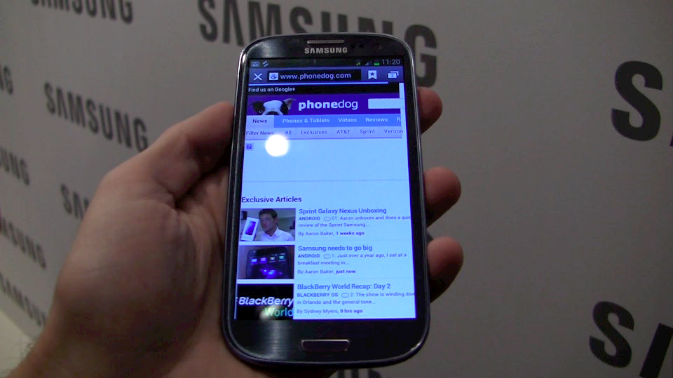
Early this morning, official news on release dates of Samsung's latest flagship device, the Galaxy S III, hit the press. Beginning in June, the Galaxy S III will launch on five U.S. carriers. Pre-orders for the Galaxy S III for Verizon and AT&T will begin this Wednesday and the device will launch "in the coming weeks". Pre-orders for U.S. Cellular begin on June 12, and for T-Mobile and Sprint, June 21 is the big day.
And what about price? Pricing for the Galaxy S III will start at $199 with a two-year agreement. The larger variant, which packs 32GB of built-in storage, will sell for $249 with an agreement.
All of this is great news for those (im)patiently awaiting word on the Galaxy S III. But this was hardly the news of the day. What hijacked headlines today wasn't the dates or pricing of the Galaxy S III, or that five U.S. carriers will officially sell the GSIII sometime within the next month. How Samsung is launching the Galaxy S III is what's so impressive.
Take the original Galaxy S, for instance. For the rest of the world, Samsung's 2010 flagship was known as none other than the Galaxy S. In the U.S., their Galaxy S device had a different moniker and look on each major carrier (and even some regional providers): Epic 4G, Captivate, Fascinate, Vibrant, etc. The Galaxy S II was much of the same story. Each model for each carrier was customized -- in name and design.
With the Galaxy S III, however, as Michael Oryl of MobileBurn says, "It [Samsung] got the U.S. carriers to play ball."
Of the five different models made official today, five of those models will be dubbed simply Galaxy S III. Nothing more, nothing less. And the colors and design are the same across the board. (Later this summer, AT&T will offer the device in a red variant, which is great. The point is that the original Galaxy S III offer has gone almost entirely untainted.) Yes, even the U.S. version features a physical home button -- a bold move from a manufacturer who has spent the better part of two years tied in legal disputes with Apple over meaningless details.
Even specifications are (mostly) on par with the international version of the Galaxy S III that was debuted last month. It features the same 4.8-inch HD Super AMOLED display, 8-megapixel camera, 16GB or 32GB of built-in storage and 2,100mAh battery. The major notable differences are the 1.5GHz dual-core Qualcomm Snapdragon S4 chip instead of the Exynos chip and, 2GB RAM instead of 1GB and LTE (or 42Mbps HSPA+) connectivity.
All of this is pretty surprising, to say the least. But what I find most impressive is that there is no carrier branding on the front of any Galaxy S III. Instead of swapping out the Samsung logo beneath the speaker grill for an AT&T or Verizon insignia, Samsung kept its prime branding position and all carrier branding can be found 'round back.
My immediate reaction to all of this was, "Wow. Samsung finally pulled an Apple." And they did, really. But it wasn't slavish or unimaginative. They didn't copy design, branding or infringe on any patents (that we know of). They mimicked Apple in a way I've wanted to see other companies do for a long time -- in marketing and product launches.
I have long said that HTC, Samsung, Motorola and all the other Android makers could learn a thing or two from Apple, and this is exactly what I was talking about. Just like with the iPhone, no matter what major carrier I do business with (sorry, T-Mo), I will be able to walk in and pick up a Galaxy S III. Not some customized, diluted version of a phone in the same family as the Galaxy S III. The Galaxy S III.
It's all about brand recognition and the Galaxy S brand has made quite a name for itself over the years. But it has always been a tad confusing how all the different pieces fit together, like why the Captivate or Vibrant were Galaxy S phones, yet looked nothing alike. With the Galaxy S III, Samsung has cut out all of the muck, used the weight associated with being the largest cell phone manufacturer in the world and is in the process of launching a worldwide Galaxy S III assault across all major (and some minor) carriers.
It speaks volumes for the Android camp, alleviating all doubt that a company other than Apple can also have its way with carriers. (I really started to doubt this after the Verizon Galaxy Nexus.) And it's something that should have HTC, Motorola and all other competitors shaking in their boots.
Kudos, Samsung. I may not be terribly excited over your Galaxy S III (… yet), but I like the direction you're headed.